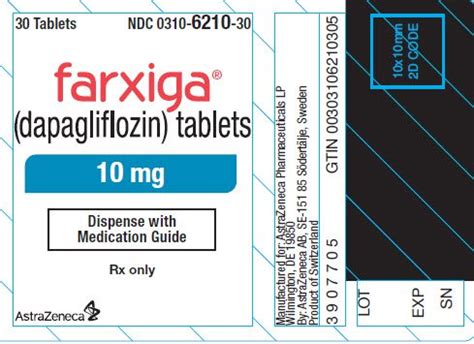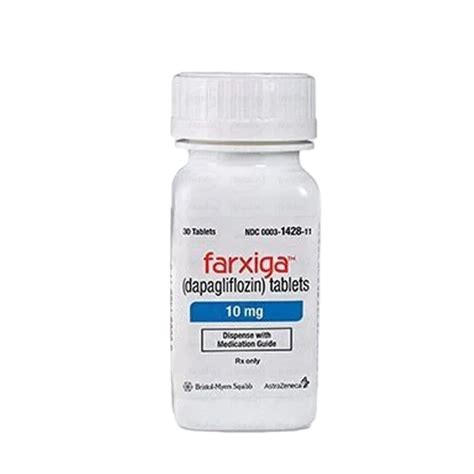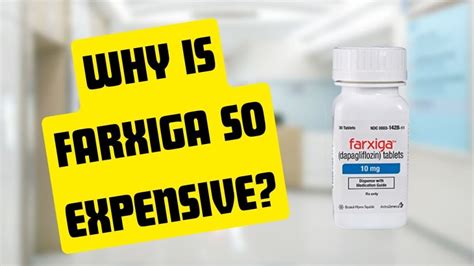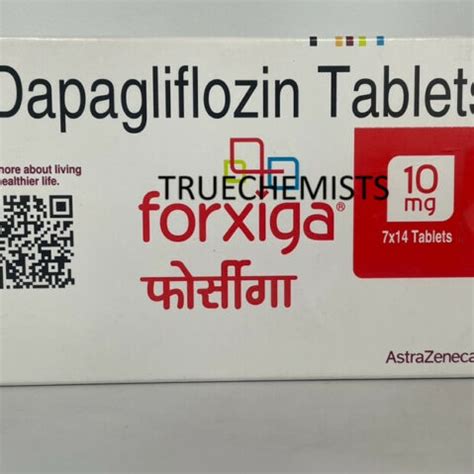Intro
Discover key facts about Farxiga 10mg, a medication for type 2 diabetes and heart failure, including benefits, side effects, and dosage, with insights into its mechanism, SGLT2 inhibition, and clinical uses.
The management of type 2 diabetes and heart failure has seen significant advancements in recent years, with medications like Farxiga (dapagliflozin) playing a crucial role. Farxiga 10mg, in particular, has been a subject of interest due to its efficacy and unique mechanism of action. Understanding the key aspects of Farxiga 10mg is essential for both healthcare professionals and patients alike. Here, we delve into five critical facts about Farxiga 10mg, exploring its benefits, working mechanisms, and important considerations for its use.
Type 2 diabetes is a chronic condition characterized by the body's inability to use insulin effectively, leading to high blood sugar levels. Over time, this can result in serious complications, including heart disease, kidney failure, and nerve damage. The introduction of SGLT2 inhibitors like Farxiga has marked a significant shift in the treatment paradigm, offering a new approach to managing blood sugar levels and reducing the risk of cardiovascular events.
The importance of effective blood sugar management cannot be overstated. High blood sugar levels can lead to a range of complications, from mild symptoms like increased thirst and urination to more severe issues such as diabetic ketoacidosis. Furthermore, the impact of diabetes on cardiovascular health is well-documented, with individuals with diabetes being at a higher risk of heart failure, heart attacks, and strokes. It is within this context that medications like Farxiga 10mg have become invaluable, providing a dual benefit of improving glycemic control and reducing cardiovascular risk.
Introduction to Farxiga 10mg

Farxiga 10mg, or dapagliflozin, is an SGLT2 inhibitor used in the treatment of type 2 diabetes and heart failure. It works by inhibiting the sodium-glucose cotransporter 2 (SGLT2) in the kidneys, which leads to the reduction of glucose reabsorption and, consequently, the increase of glucose excretion in the urine. This unique mechanism of action sets it apart from traditional antidiabetic medications and has been shown to provide significant benefits in terms of glycemic control and cardiovascular outcomes.
Benefits of Farxiga 10mg
The benefits of Farxiga 10mg are multifaceted, including improved glycemic control, weight loss, and reduced blood pressure. These effects are largely attributed to its mechanism of action, which not only reduces glucose levels but also has a beneficial impact on weight and blood pressure, factors that are closely linked to the management and progression of diabetes and heart failure.Working Mechanism of Farxiga 10mg

The working mechanism of Farxiga 10mg is centered around the inhibition of the SGLT2 in the kidneys. Under normal circumstances, the SGLT2 is responsible for the majority of glucose reabsorption in the kidney. By inhibiting this transporter, dapagliflozin increases the amount of glucose excreted in the urine, thereby lowering blood glucose levels. This mechanism is independent of insulin, which makes it an attractive option for patients with type 2 diabetes who may have varying levels of insulin resistance or deficiency.
Steps to Initiating Farxiga 10mg Therapy
Initiating Farxiga 10mg therapy involves several steps, including assessing the patient's renal function, evaluating for signs of volume depletion, and monitoring for potential side effects such as genital mycotic infections and urinary tract infections. It is also crucial to educate patients on the proper use of the medication, including the importance of adherence to the prescribed regimen and the need to report any adverse effects promptly.Practical Examples and Statistical Data

Clinical trials have provided significant insights into the efficacy and safety of Farxiga 10mg. For instance, the DECLARE-TIMI 58 trial, a large-scale study involving patients with type 2 diabetes, demonstrated that dapagliflozin significantly reduced the risk of major adverse cardiovascular events (MACE) and hospitalizations for heart failure. These findings underscore the potential of Farxiga 10mg to not only manage blood sugar levels but also to provide cardiovascular protection, a critical aspect of comprehensive diabetes care.
Key Considerations for Use
When considering the use of Farxiga 10mg, several key factors come into play. These include the patient's renal function, as the medication is contraindicated in patients with severe renal impairment, and the risk of adverse effects such as hypotension and genital mycotic infections. Additionally, the potential for increased risk of diabetic ketoacidosis, a rare but serious side effect associated with SGLT2 inhibitors, must be carefully weighed against the benefits of therapy.Benefits and Risks of Farxiga 10mg

The benefits of Farxiga 10mg are well-documented and include improved glycemic control, reduced risk of cardiovascular events, and potential benefits in terms of weight loss and blood pressure reduction. However, as with any medication, there are also risks to consider, including the potential for adverse effects and the need for careful patient selection and monitoring.
Steps to Minimizing Risks
Minimizing the risks associated with Farxiga 10mg involves careful patient evaluation, ongoing monitoring, and education on the potential side effects and their management. This includes regular assessment of renal function, monitoring for signs of hypotension, and prompt recognition and treatment of any adverse effects that may arise.Conclusion and Future Directions

In conclusion, Farxiga 10mg represents a significant advancement in the management of type 2 diabetes and heart failure. Its unique mechanism of action, coupled with its demonstrated benefits in terms of glycemic control and cardiovascular risk reduction, makes it an invaluable tool in the treatment arsenal. As research continues to unfold, it is likely that the role of Farxiga 10mg will expand, potentially leading to new indications and further refinement of its use in clinical practice.
Final Thoughts
As we move forward in the management of diabetes and heart failure, medications like Farxiga 10mg will undoubtedly play a critical role. Their ability to address not only the symptoms but also the underlying pathophysiology of these conditions offers a promising future for patients and healthcare providers alike. By staying informed about the latest developments and advancements in the field, we can work together to improve outcomes and enhance the quality of life for those affected by these conditions.Engagement and Action

We invite readers to share their thoughts and experiences with Farxiga 10mg, either through personal stories of managing diabetes or heart failure or by discussing the latest research and advancements in the field. Your engagement and participation are invaluable in fostering a community dedicated to improving healthcare outcomes and promoting awareness about critical health issues.
Call to Action
To further your understanding of Farxiga 10mg and its role in managing type 2 diabetes and heart failure, we encourage you to explore additional resources, including clinical trials, patient testimonials, and educational materials provided by healthcare professionals. By taking an active role in your health and staying informed, you can make empowered decisions about your care and contribute to the ongoing dialogue about innovative treatments and therapies.What is Farxiga 10mg used for?
+Farxiga 10mg, or dapagliflozin, is used in the treatment of type 2 diabetes and heart failure. It works by inhibiting the sodium-glucose cotransporter 2 (SGLT2) in the kidneys.
How does Farxiga 10mg work?
+Farxiga 10mg works by inhibiting the SGLT2 in the kidneys, leading to the reduction of glucose reabsorption and the increase of glucose excretion in the urine.
What are the benefits of Farxiga 10mg?
+The benefits of Farxiga 10mg include improved glycemic control, reduced risk of cardiovascular events, and potential benefits in terms of weight loss and blood pressure reduction.
